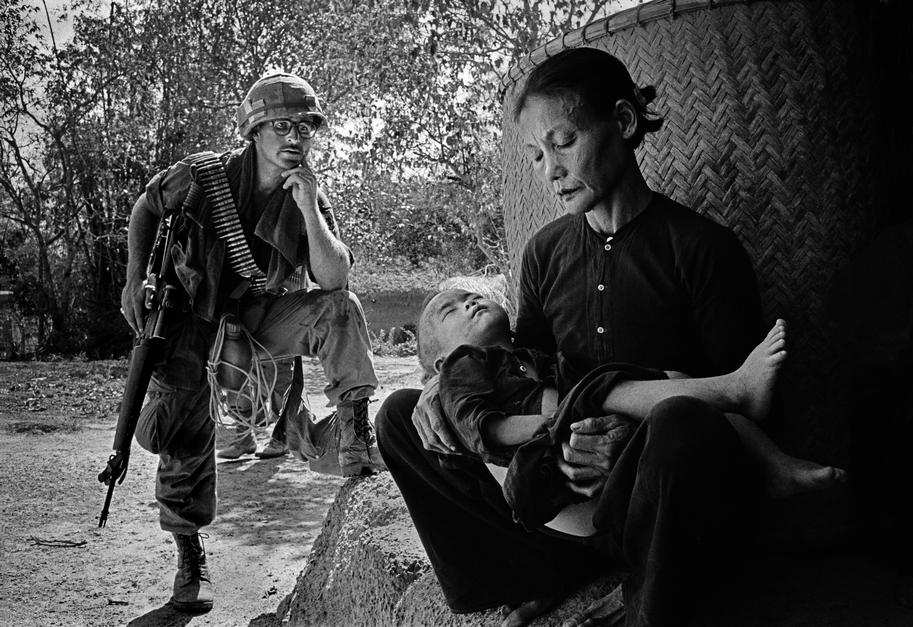
Quang Ngai, Vietnam by Philip Jones Griffiths, 1967. © Magnum Photos
I happened to look at this photograph two or three weeks ago and it has been on my mind ever since. In Philip Jones Griffiths’ classic photobook Vietnam Inc., published in 1971, he gives the picture, taken in Quang Ngai Province, South Vietnam, a double-page spread. According to his caption, the woman’s husband, who was hiding in a tunnel along with other men from her village, had been killed a few moments earlier.
It is a troubling image, riddled with unseen violence. The woman is broken with silent grief. The child, still living, could be sleeping or unconscious. The soldier is impossible to read. His stance, with his leg up, is commanding and his fingers rest on his gun, and yet his pose, chin in hand, is reflective and the glasses add to the studious air. Take away the martial trappings and put him in a museum and he could be pondering a piece of sculpture. Does his steady gaze represent compassion, suspicion, loathing, emotional exhaustion, or utter indifference to their survival?
I don’t show the picture to make a point about America’s involvement in Vietnam—an exhaustively anatomized subject—or in later wars. What the image captures with devastating clarity, beyond its historical moment and place in Jones Griffiths’ published critique, is the crushing, gendered power relations of war. It forces us to remember that it is men, overwhelmingly, who initiate conflicts, prosecute them and cause suffering. The soldier’s implacability expresses the remorseless military logic of the woman’s fate. Jones Griffiths writes that after destroying every place of refuge, the GIs withdrew and called in artillery fire on the defenseless villagers.
In The Genius of Photography, a fine series of television documentaries, Jones Griffiths—filmed shortly before his death in 2008—argues that photography, more than any other art form, is about being there. Through firsthand experience the photographer becomes “eloquent at telling and seeing and understanding” and the pictures are vital records of history. In the program, the conceptual photographers Broomberg & Chanarin dismiss the “macho” frontline photojournalist as passé. Today, they say, photographers arrive on the scene later, when the action is over, to take a “reflective look at things” and “make more of an analysis.” Analysis is exactly what Jones Griffiths provides in his pictures and writing in Vietnam Inc. His findings have a depth of experience and a moral authority that comes from taking risks and personally bearing witness. It may suit some photographers to deny this now, but the viewer still sees it.
See all Exposure columns

